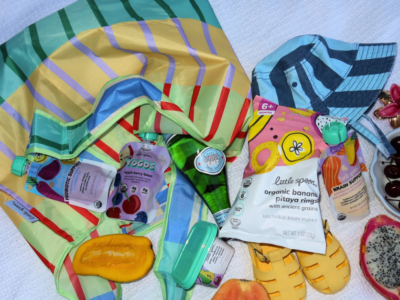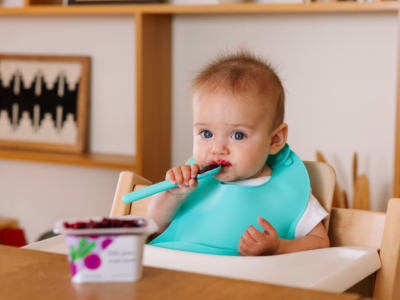Summer is here, and you know what that means: splash pads, endless sunscreen applications, and fireworks! While this season is full of exciting family activities, loud noises that occur in events like concerts, parades, and sporting events can pose a risk to little ones’ hearing, and can also cause children that are sensitive to loud noises to get very uncomfortable.
The CDC estimates that approximately 12.5% (5.2 million) of children and adolescents suffer from Noise Induced Hearing Loss (NIHL), or suffered permanent damage to their hearing due to excessive exposure to loud noises. Children that are sensitive to loud noises are even more affected by this, since they tend to get dysregulated when exposed to high levels of noise.
We know it can be very hard to manage the needs of a child that is sensitive to loud noises, especially while trying to have fun and keeping everyone safe at the same time. So, we gathered some tips to help you navigate noisy situations this season so your mini can enjoy the summer fun in a safe way!
1. Understand your child
If your child dislikes certain noises because they feel scary, you can provide extra comfort by holding them while the loud noises occur or bringing along their favorite lovey. Well rested children have an easier time regulating their emotions, so make sure they sleep well before a major event. If you feel like your child’s reaction to loud noises is because of an underlying condition, please make an appointment with your doctor.
2. Plan strategically
The farther you are from the source of the noise, the softer it becomes. If you are attending a concert, get there early so that you can sit far away from the speakers. If you are going to an event with fireworks, ask where the fireworks will be launched from, so that you can avoid being near the area. With a little planning ahead, you can make sure to accommodate your little one’s needs.
3. Anticipate the situation
Anticipation is key! Children are visual learners, and that is why I highly recommend creating a social story! Social stories help narrate to your child what a situation will look like, and how to deal with it. (I like to use Canva to create mine, that way I can put my child’s face in the story). Read the story once or twice per day in anticipation of the big event. You can also take it with you so that your child remembers what will happen and what to do about it.
4. Teach them to cover their ears
Teach by example! Use role playing games around the house to teach your child how to protect their ears from loud noises. Take advantage of opportunities like turning on the vacuum or the blender to teach your child how to put their hands on their ears to block out the noise – remember, repetition is key!
5. Grab their favorite toy or fidget
Fidgets are a great way to help your child calm down when unregulated, and it helps them learn coping strategies in uncomfortable situations. By putting their focus in the fidget they have in their hands, your child might get distracted from the loud noises around them.
6. Use baby and toddler ear covers
Ear covers are useful when noise levels are at 85 decibels or above, sounds above this measure can be harmful to hearing. For reference, the typical speech volume is at 55-65 dB, busy city traffic is measured at 85 dB, and fireworks can reach up to 145 dB! If you are unsure of the noise level of certain sounds, open your phone because there is an app for that!
There are many baby and toddler friendly earbuds and earmuffs that help block out loud noises and protect those little ears. These are a great option for sporting events, concerts and fireworks. Not all ear protectors are created equal, so make sure to research the noise reduction rate (NRR) of the brand you plan to buy. Make sure you choose protectors that fit your child well and set clear boundaries and expectations around their use. Finally, you will always be their best role model, so consider getting some for yourself as well!
7. Bring along the white noise
White noise is a great way to block out undesired noises, especially when you are trying to help your little one fall asleep in noisy places. There are many portable options available that make it easy to hang in the stroller, car seat or wherever you want to go. Remember to place it at an appropriate distance and noise level so that you won’t harm your little one’s ears.
Camila Martelo is a Pediatric Sleep Consultant, Positive Discipline Parenting Educator, and a mom that sleeps! With broad experience in pediatric sleep and parent coaching, Camila has helped families around the world go from surviving to happy, rested, and thriving! Find your sleep solution here.



